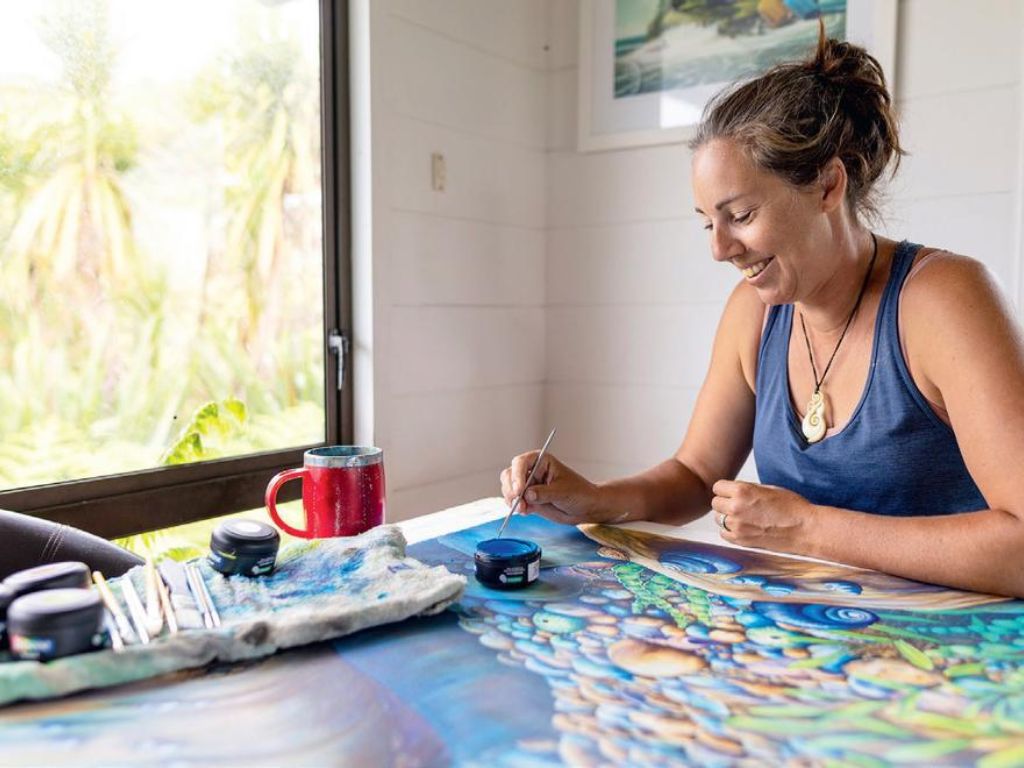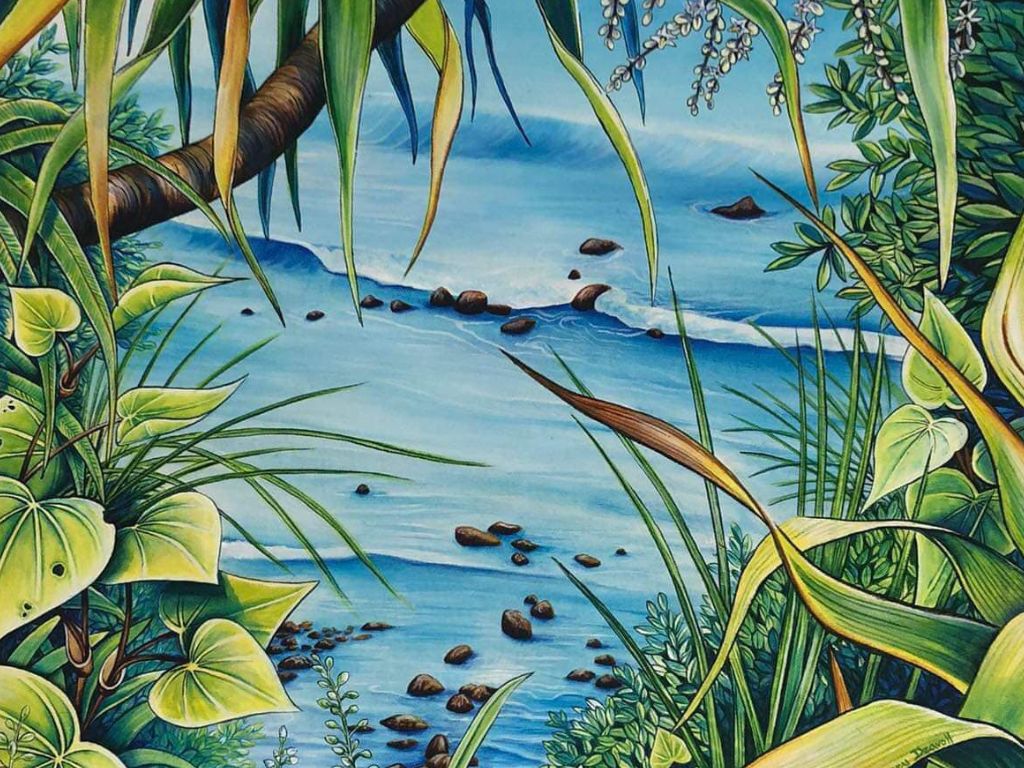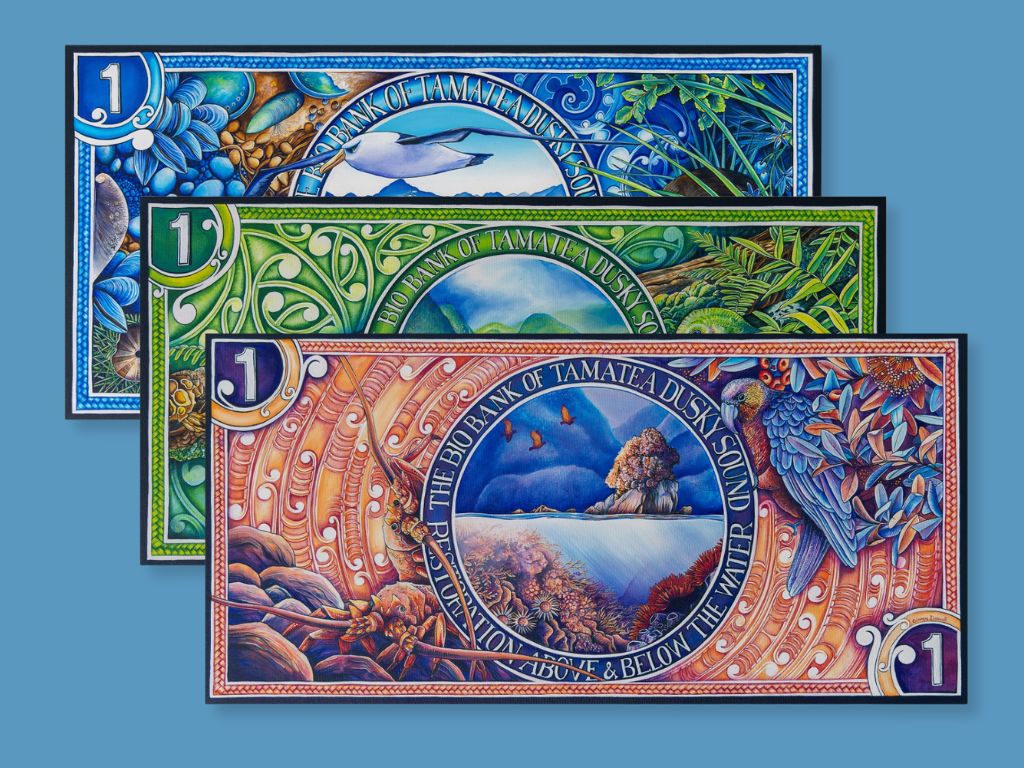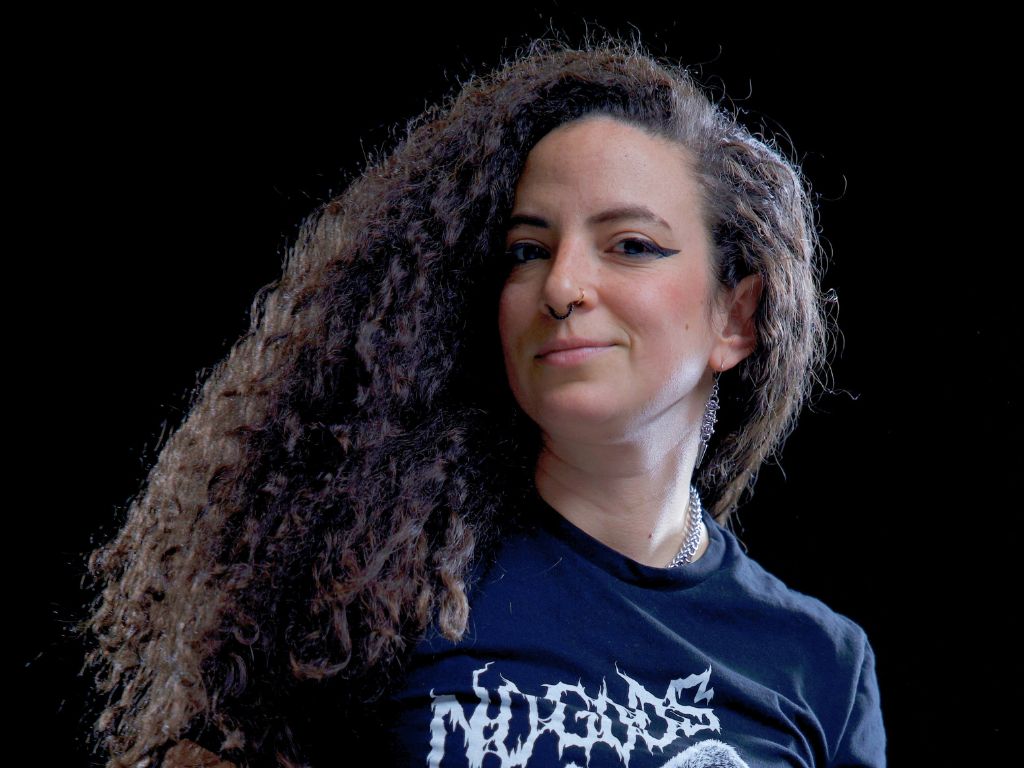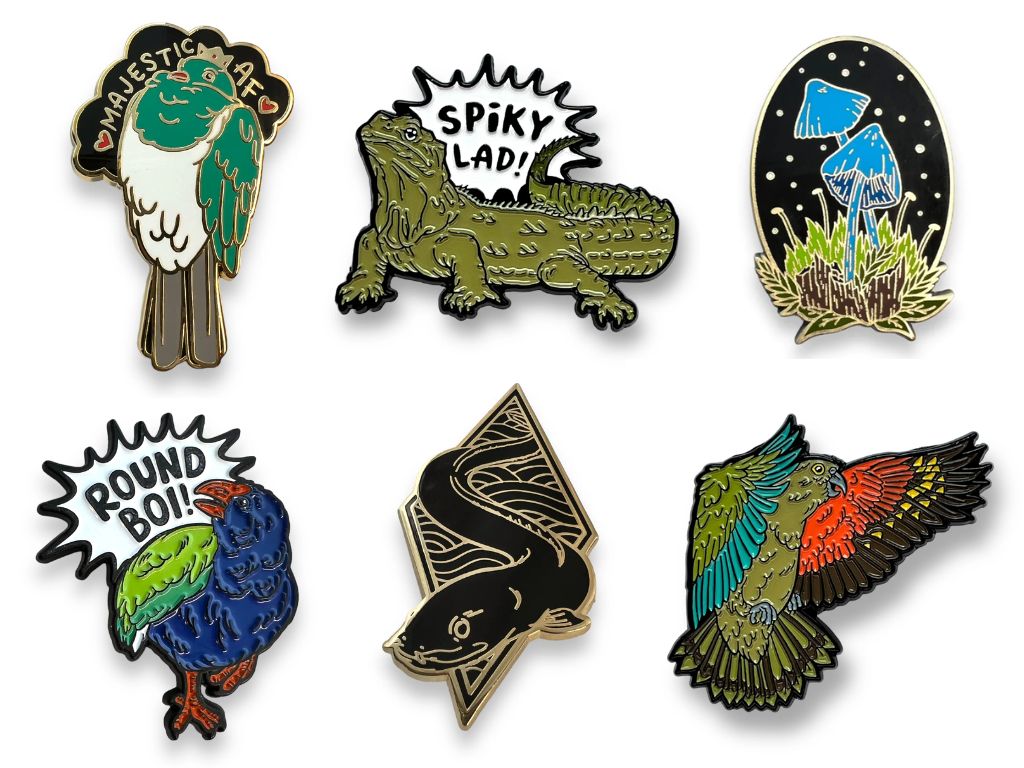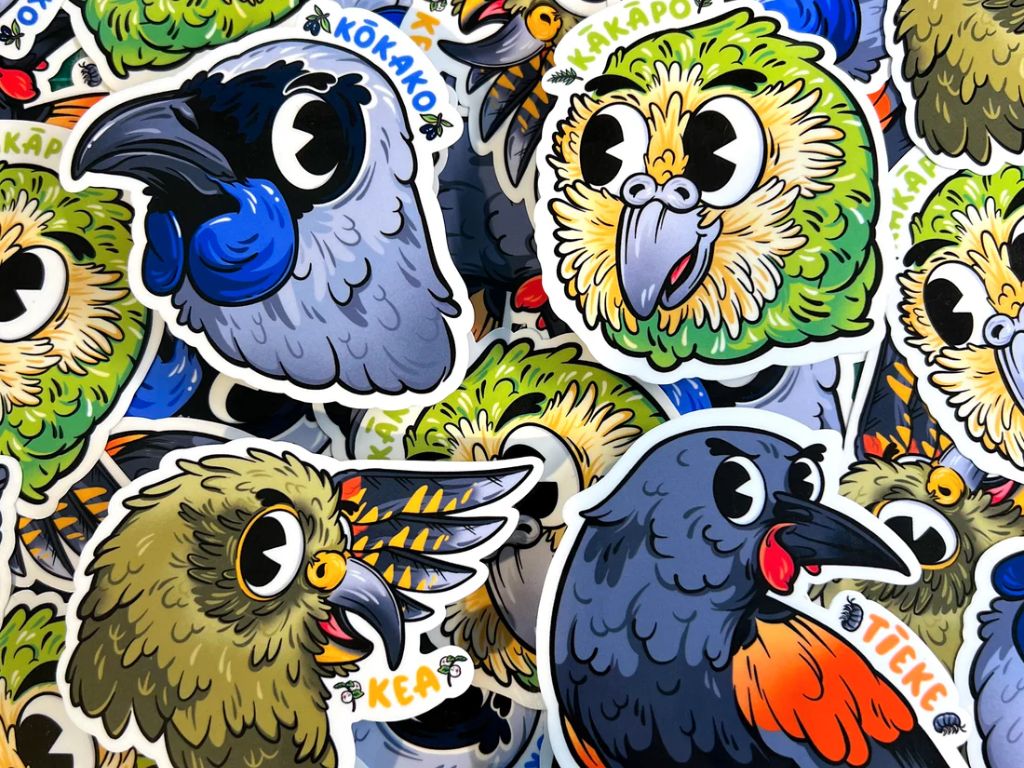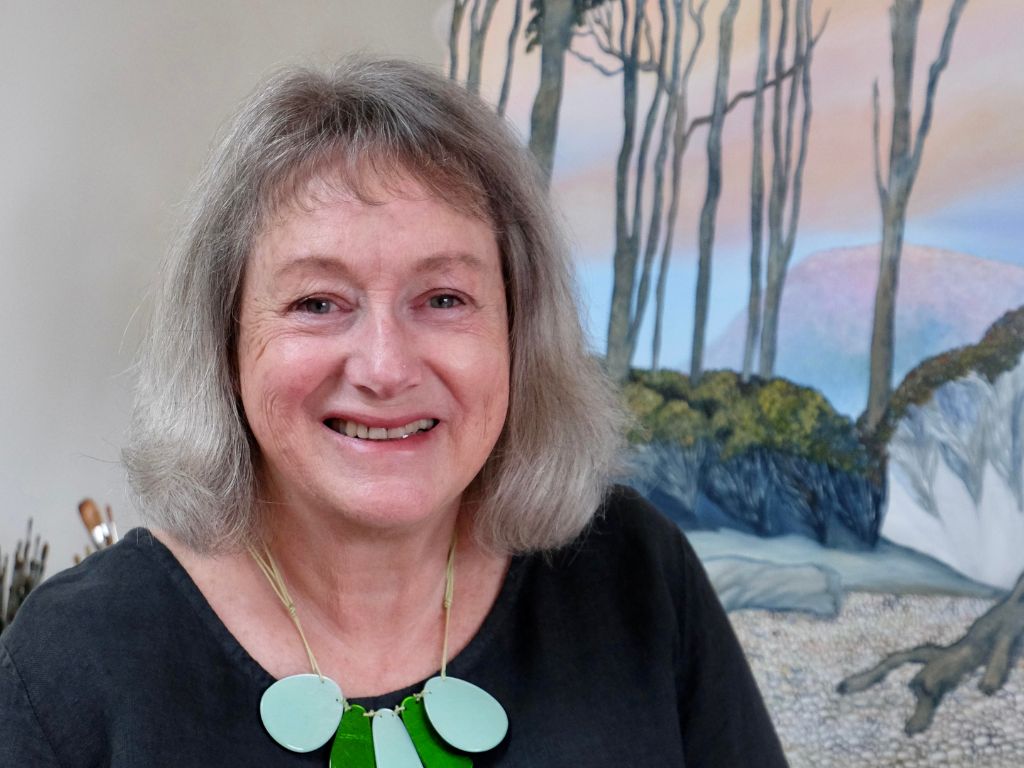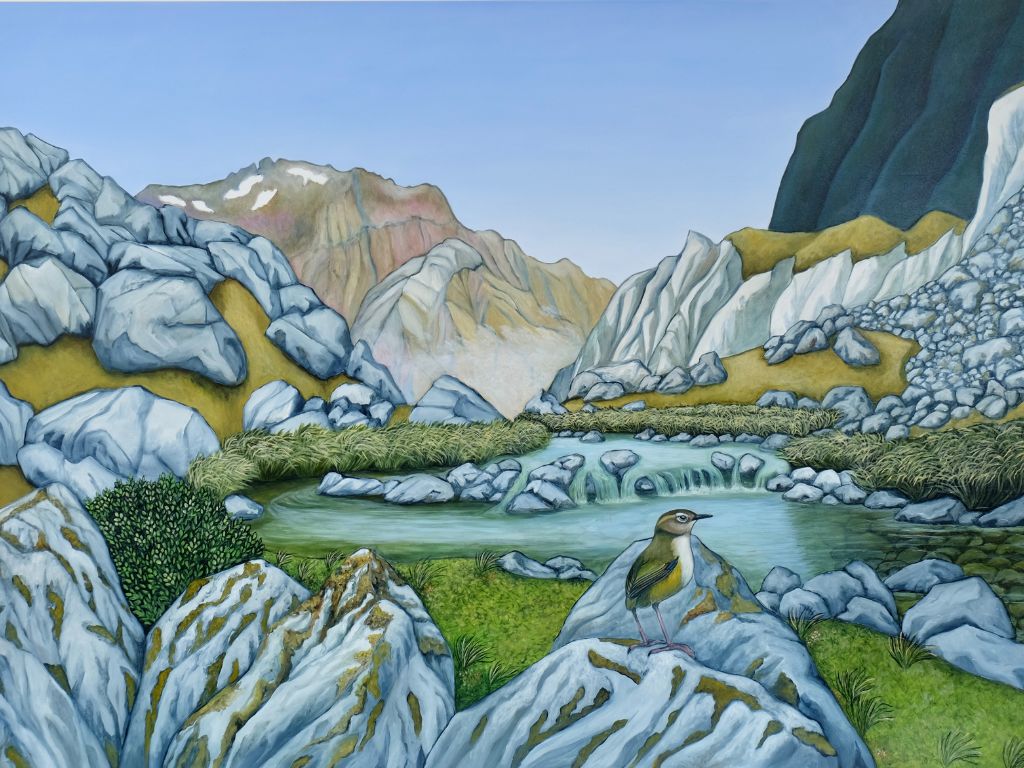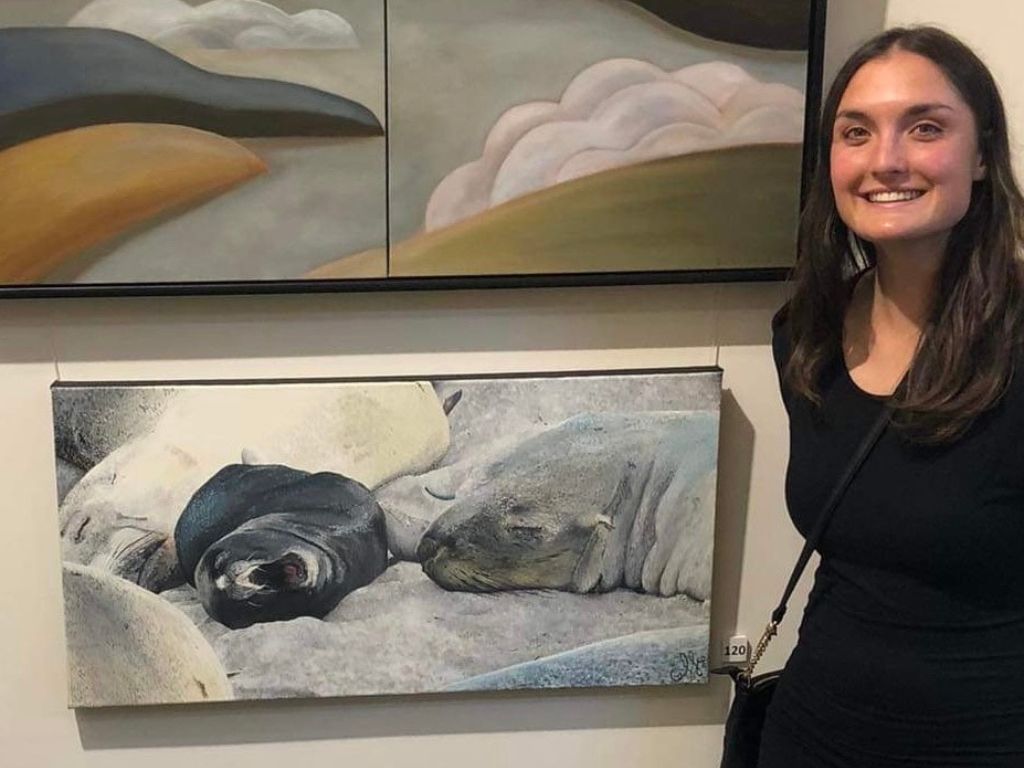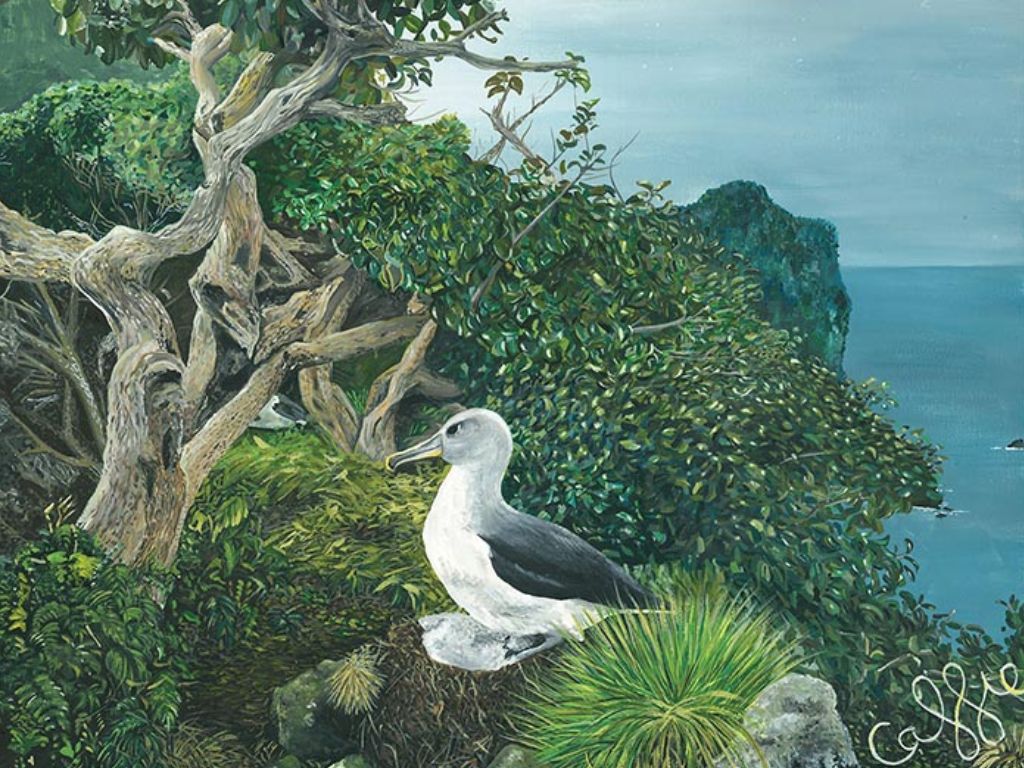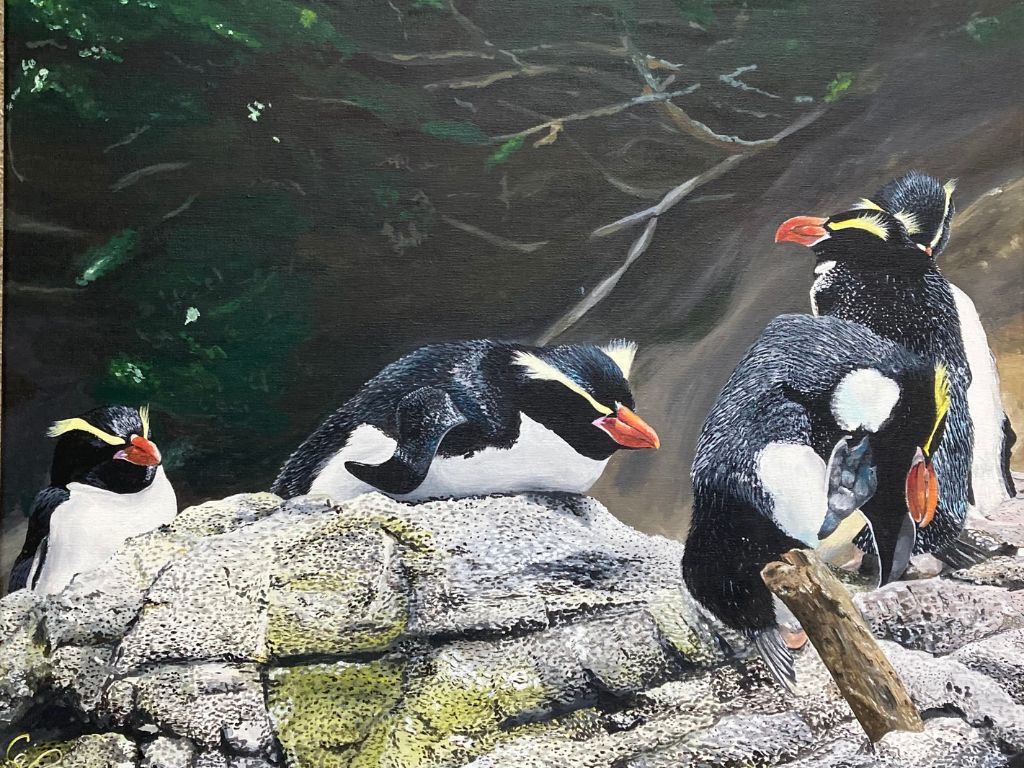In a world where environmental crises are becoming increasingly urgent, what role can art play in driving change? These four New Zealand artists are creating stunning works of art and using their platforms to champion the conservation of our unique landscapes and wildlife.
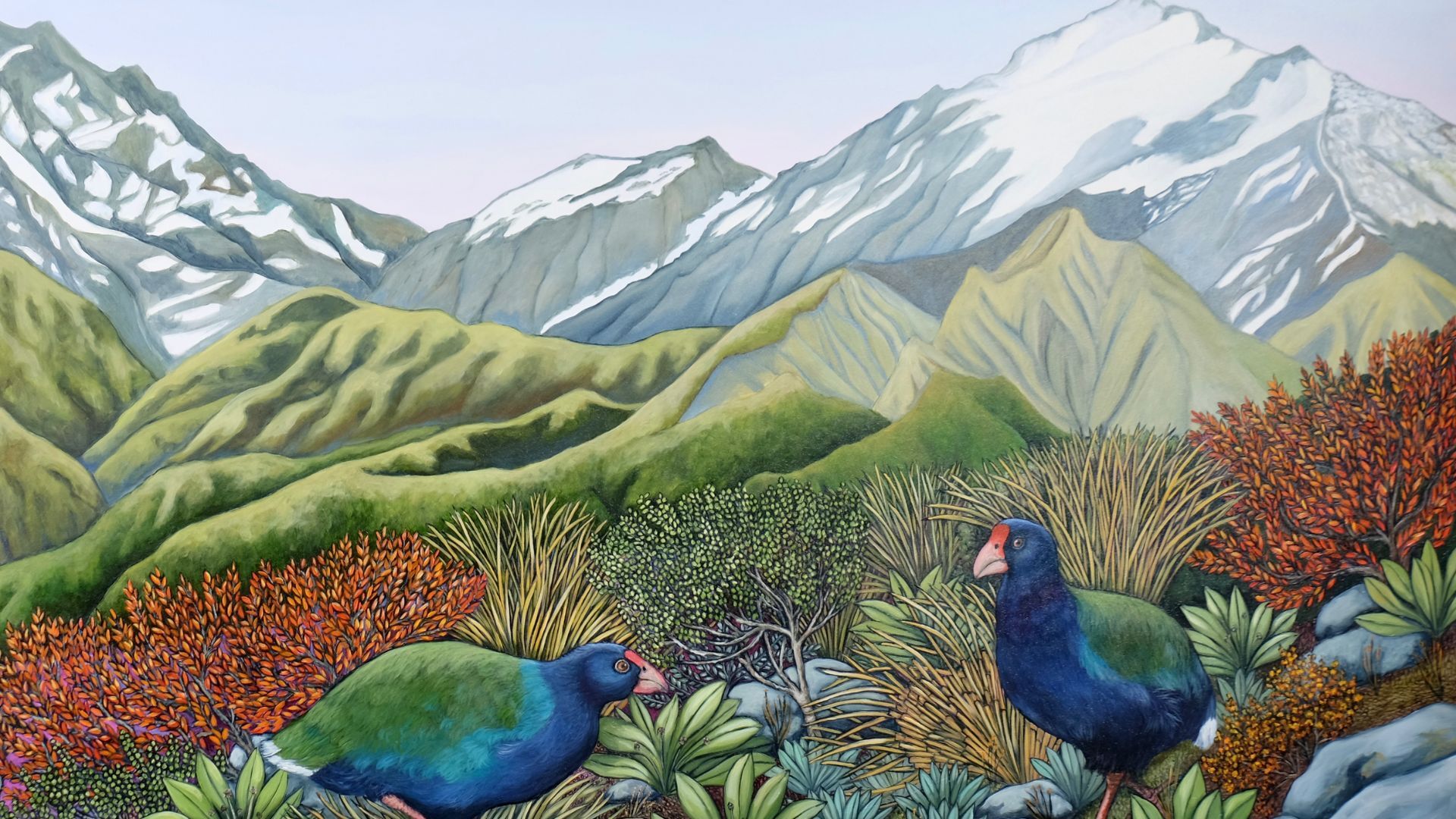
Through diverse mediums and innovative approaches, they blend creativity with environmental advocacy, raising awareness and funds for critical conservation projects.
Ginney Deavoll
Location: Hahei, Coromandel Peninsula
Medium: Acrylic on canvas, murals
Art available: ginneydeavoll.com
Social: Ginney Deavoll Art (Facebook)
Favourite native flora or fauna? Nikau palm, kea, octopus
As an artist, author and adventurer, Ginney Deavoll has made a name for herself in the conservation sphere. Over the years, she has immersed herself in our native land as her muse and inspiration.
“Last year, I was walking down the beach when a couple stopped me and said, ‘You’re Ginney? We read your book and just had to go and see Fiordland for ourselves.’ This is my biggest win,” says Ginney.
“The more awareness there is, the more opportunity there is for innovation and learning.”
Her book The Long Way, chronicles her journey from the bottom of the South Island to the top, including kayaking in Fiordland. The experience led Ginney to be involved in the Tamatea/Dusky Sound restoration project, working alongside the Department of Conservation and charter company Pure Salt. In 2022, she was invited to be a resident artist aboard one of their adventure ships, with proceeds from sales going directly to the restoration project. The aim was to artistically share the goal of Tamatea (Dusky Sound) becoming our most intact ecosystem and a biobank for other sanctuaries around the country.
Pepper Racoon
Location: Te Whanganui-a-Tara (Wellington)
Medium: Digital product design, also works with ink
Art available: pepperraccoon.com and at several eco sanctuaries (Zealandia, Sanctuary Mountain, Arataki Visitor Centre)
Social: Pepper Raccoon (Facebook, Instagram, Tiktok)
Favourite native flora or fauna? Kererū and tuna (longfin eel)
Pepper Raccoon’s journey as an artist began at a young age with a close kererū encounter at Lake Rotopounamu in the Tongariro National Park. This ignited her lifelong passion for New Zealand’s natural landscape. “I draw all of my inspiration from nature,” she expresses.
Pepper’s work blends digital design and ink and celebrates New Zealand’s flora and fauna. As an indie visual artist and merchandise designer, she’s dedicated to supporting conservation causes.
Through her donations to Trees That Count, a charity focused on restoring native forests, she has already contributed $1500 and helped plant 100 trees. Her ongoing monthly contributions aim to give back to ngāhere (forest) and offset her business’ carbon footprint, with her next goal of planting 1000 trees well on track.
In addition to beautifying the landscape, Pepper is proud to help create homes for wildlife and long-term environmental solutions.
Clare Reilly
Location: Blueskin Bay, Otago
Medium: Oil on board
Art available: Little River Gallery and clarereilly.co.nz
“Being able to assist conservation groups through donations and raising awareness is an important part of my work,” says artist Clare Reilly, whose passion for New Zealand landscapes and birds spurred a conservation interest that has spanned years of involvement with various environmental projects.
Clare’s journey with conservation began with the Banks Peninsula Tūī Restoration Project in 2010.
Here she not only helped transport the birds via float plane, but also raised money at one of her solo exhibitions.
Seven years ago, she moved to Blueskin Bay, close to the predator-proof fenced Orokonui Ecosanctuary, where she found a thriving community of like-minded conservationists. This deepened her commitment to conservation, and she has since supported the Million Dollar Mouse Eradication Programme, Coal Island Restoration, and the Kea Conservation Trust, among others.
By giving floor talks at her exhibitions, she provides valuable information about New Zealand’s endangered species and encourages visitors to engage with the importance of conservation. Her works even travel internationally via paintings, cards, calendars, and her book Eye of the Calm, all helping raise global awareness of New Zealand’s wildlife.
Cassie Newman
Location: Auckland
Medium: Acrylic on canvas
Art available: artcollective.co.nz/vendor/cassie-newman/
Social: Cassie Newman Art (Instagram)
Favourite native flora or fauna? Native beech forests, specifically red beech
Currently studying for her PhD in Australia, Cassie Newman’s interest in conservation and learning has taken her far and wide. “An important part of my research has been bridging the gap between science, conservation and the general public. Art is the perfect way to do that,” she believes.
In 2022, she was awarded a scholarship with Heritage Adventures for a subantarctic islands expedition. This experience reinforced her commitment to conservation and inspired a goal of creating 12 subantarctic paintings in 12 months, with 30% of the profits going to charity. She is now an ambassador and highly recommends the scholarship experience to any young person with a sense of adventure.
So far, her art has raised approximately $1400 for various organisations, including Forest & Bird, the Royal Albatross Centre/Otago Peninsula Trust, Maukahuka/Auckland Island Pest Free Project, The Yellow-eyed Penguin Trust, and the New Zealand Sea Lion Trust. For Cassie, the donations from her artwork are a tangible way to make a difference, and she values how her art can lead to real-world change.

